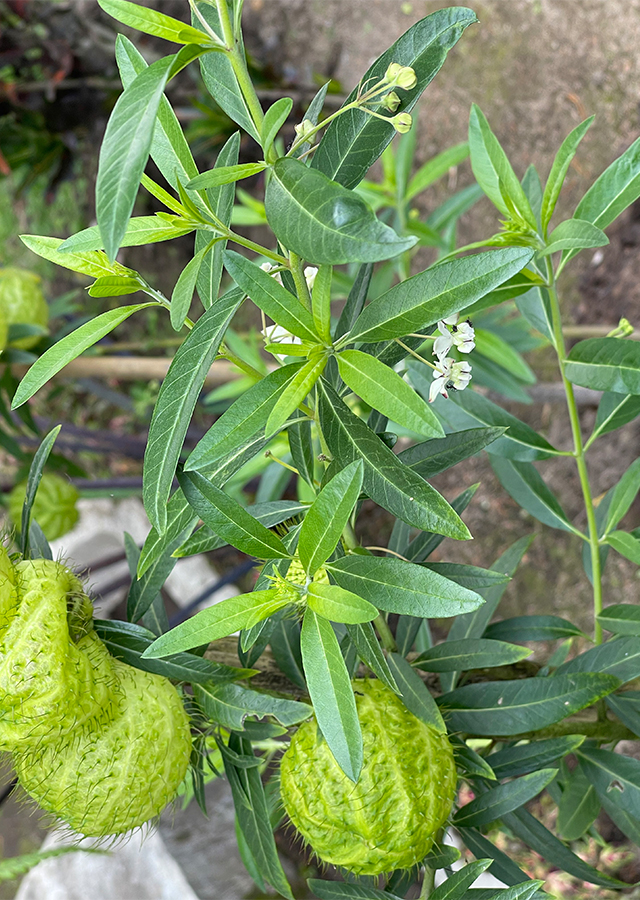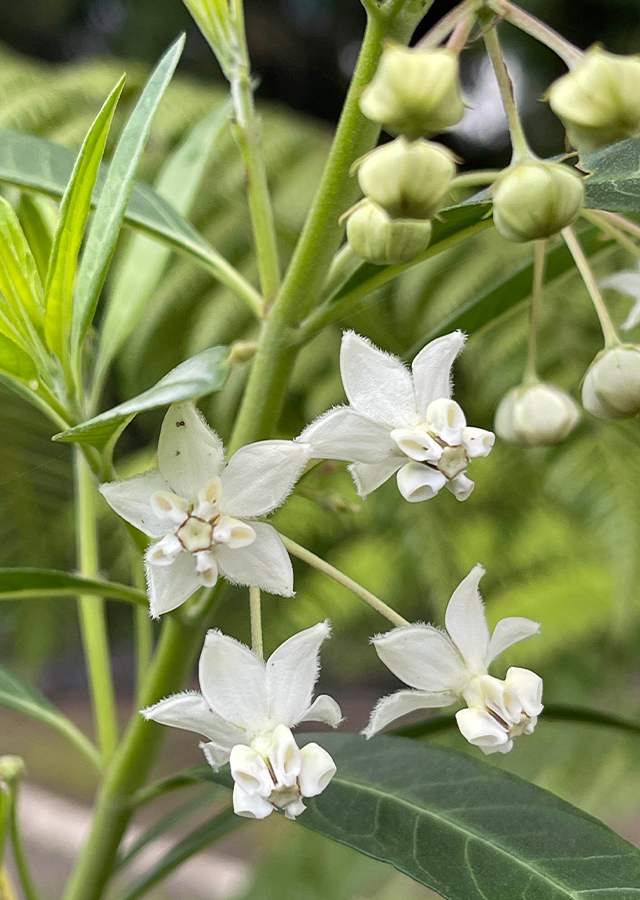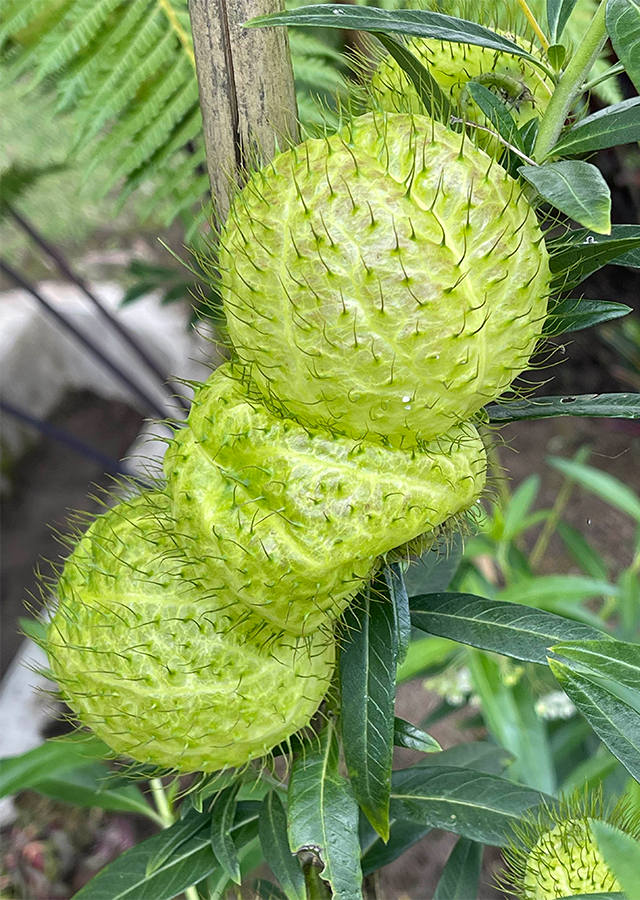Traditional Herbs from Gomphocarpus physocarpus
treating_stomach_problems
- Prepare all the balloon flower plants, wash them thoroughly.
- Boil the ingredients until boiling.
- Let it warm/cool.
- Strain then drink.
cough
- Take Wash balloon flower seeds until clean.
- Boil the ingredients until boiling.
- Let it warm/cool.
- Strain then drink.
What is Gomphocarpus physocarpus Looks like??



Parts of Gomphocarpus physocarpus that could be used
- Leaves", "Seeds", "Latex", "Roots", "All Parts of the Plant
Gomphocarpus physocarpus Distribution
Balloon flowers or Gomphocarpus physocarpus originate from South Africa, Swaziland and Mozambique. This species has been widely cultivated and naturalized in Africa, Mediterranean countries, China, India, Sri Lanka, Mexico, Central America, and tropical South America. G. physocarpus is often planted as an ornamental plant, cut plant, and medicinal plant. This species can also be used as a source of fiber, where the fiber is used to make nets and fishing nets. In the cut flower industry, the spear-shaped parts of the fruit and leaves are widely used in flower arrangements. This species is a food source for certain insects including monarch butterflies and caterpillars of the Danaus genus. Meanwhile, based on its function as a medicinal plant, G. physocarpus is widely used in traditional medicine in Africa and Asia. This species is traditionally used and is believed to be able to overcome various disease complaints.Agroecology of Gomphocarpus physocarpus
G. physocarpus can generally be found growing in tropical, warm subtropical, semi-arid areas from sea level to 900 m above sea level in South Africa and up to 1,830 m above sea level in Hawaii. It usually grows as a weed in trash cans, disturbed sites, open forests, grasslands, wetlands, and along roadsides, and is also planted as an ornamental plant in gardens, yards and parks. G. physocarpus is drought tolerant and prefers to grow in areas with full sun exposure, but is still tolerant of partial shade, and prefers well-drained, acidic soil (pH = 5.6 - 6). For optimal growth, this plant is suitable for sandy soil.
Morphology of Gomphocarpus physocarpus
- Taproot.
- The stem is generally single, branched above, woody and fibrous below, young stems are covered with soft short hairs. The branches are pale yellowish green and hollow. Excrete a milky sap when cut.", "Leaves are light green, opposite, narrowly lanceolate or narrowly oval to lance-shaped,\u00a0pubescent on the upper surface (adaxial), hairy on the underside along the central vein, leaf tip pointed and the base of the leaf gradually narrows, the edge of the leaf is flat. The petiole is approximately 1 cm. Exudes a milky sap when damaged.
- Flowers in pendulous clusters,\u00a0have 5 white crowns and a crown-like structure (corona)\u00a0in the middle the white ones are tinged with pink or purple. They are borne in small drooping clusters of 4-10 flowers near the ends of the branches, with individual flower stalks, all of which originate from a point or stem. the same center. The flower corolla is about 1.4-2 cm in diameter, the lobes are ovate, the edges are finely hairy. The corona consists of five sacral lobes that develop from the corolla. Flowers also have 5 small sepals (petals) and 5 stamens. The corona surrounds the stamens and carpels which consist of the ovary, style and stigma. The stamen filaments unite to form a staminate column that encloses the female part. The female part consists of two free carpels whose ends unite and enlarge to form the pistil head. The anthers are fused with the pistil head.
- The fruit is a large, round, balloon-like bulging follicle, pale green and almost transparent, covered with soft, downy spines (tomentose) when young, glabrous when ripe, containing many seeds. The follicles become yellowish, often tinged with red or brown, as they mature and gradually split to release numerous seeds. The fruit often has a concave (i.e. overhanging) tip with a small beak.
- There are many seeds in each fruit, ovate-oval, flat, small, brown-black in color with a tuft of long silky white hairs attached to one of them. the end.
Cultivation of Gomphocarpus physocarpus
- Propagation of plants through seeds, stem or leaf cuttings.
- Controlled germination at temperatures between 21 and 23 \u00b0C usually takes 14-21 days after planting.
- Plants produce seeds in large quantities which are easily spread by the wind and water.
Gomphocarpus physocarpus, more details :
Chemical Content of Gomphocarpus physocarpusCardiac glycosides, steroids/terpenoids, alkaloids, and phenols.
Benefits of Gomphocarpus physocarpus
Treats stomach aches, headaches, warts, coughs, strengthens the body, sedative.
Simplisia of Gomphocarpus physocarpus
- Prepare the leaves of the balloon flower,\u00a0wash them thoroughly with running water\u00a0then drain.
- Dry in direct sunlight for several days or in an oven at a temperature\u00a040 \u00b0C until the water content\u00a010%.
- Save\u00a0 u00a0simplisia in plastic or a clean, airtight container.
Another Facts for Gomphocarpus physocarpus :
Synonym of Gomphocarpus physocarpusAsclepias brasiliensis (E.Fourn.) Schltr., Asclepias physocarpa (E.Mey.) Schltr., Gomphocarpus brasiliensis E.Fourn.
Habitus of Gomphocarpus physocarpus
Bush. Erect, annual shrub, usually growing to a height of about 0.5 - 2 m, but sometimes reaching a height of 2.5 m
Habitat of Gomphocarpus physocarpus
- Wetland", "Forest", "Coastal", "Roadside", "Grassland", "Land
No comments:
Post a Comment